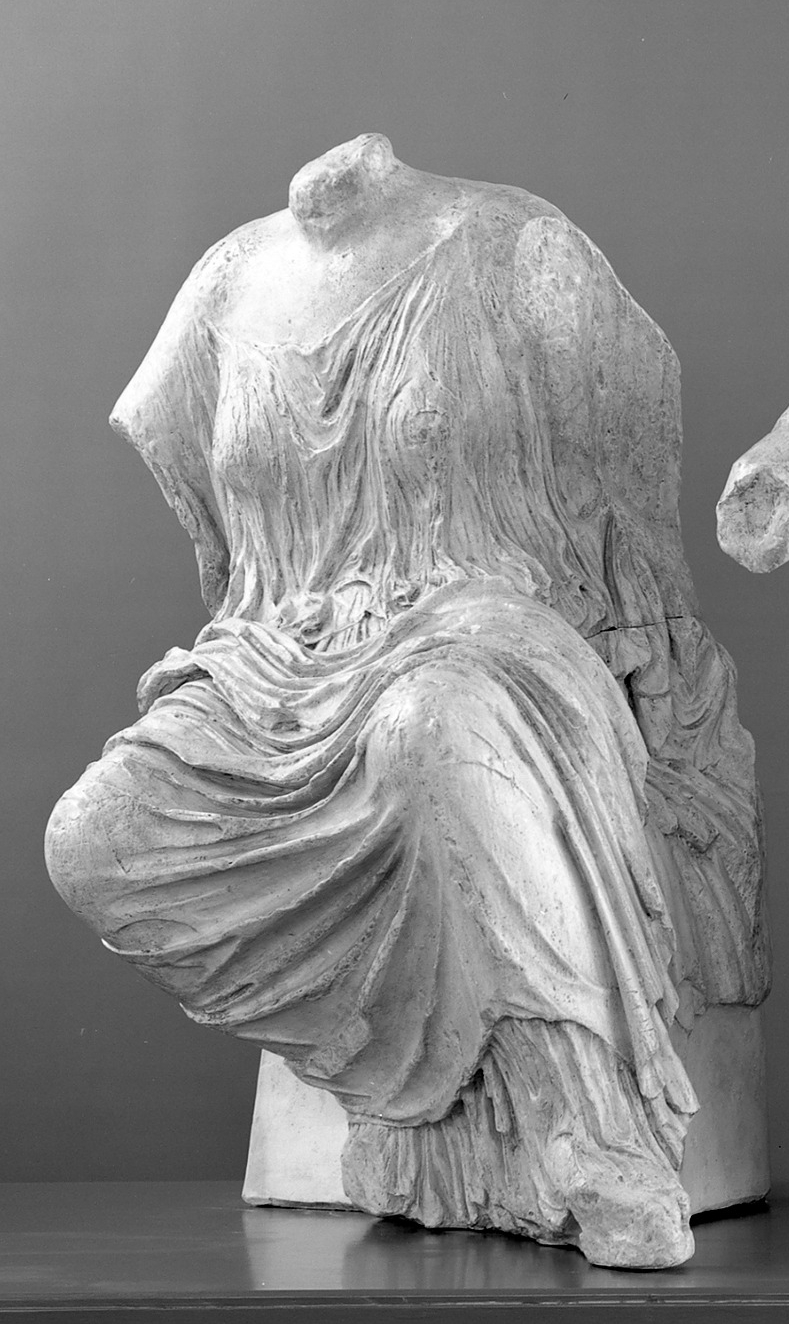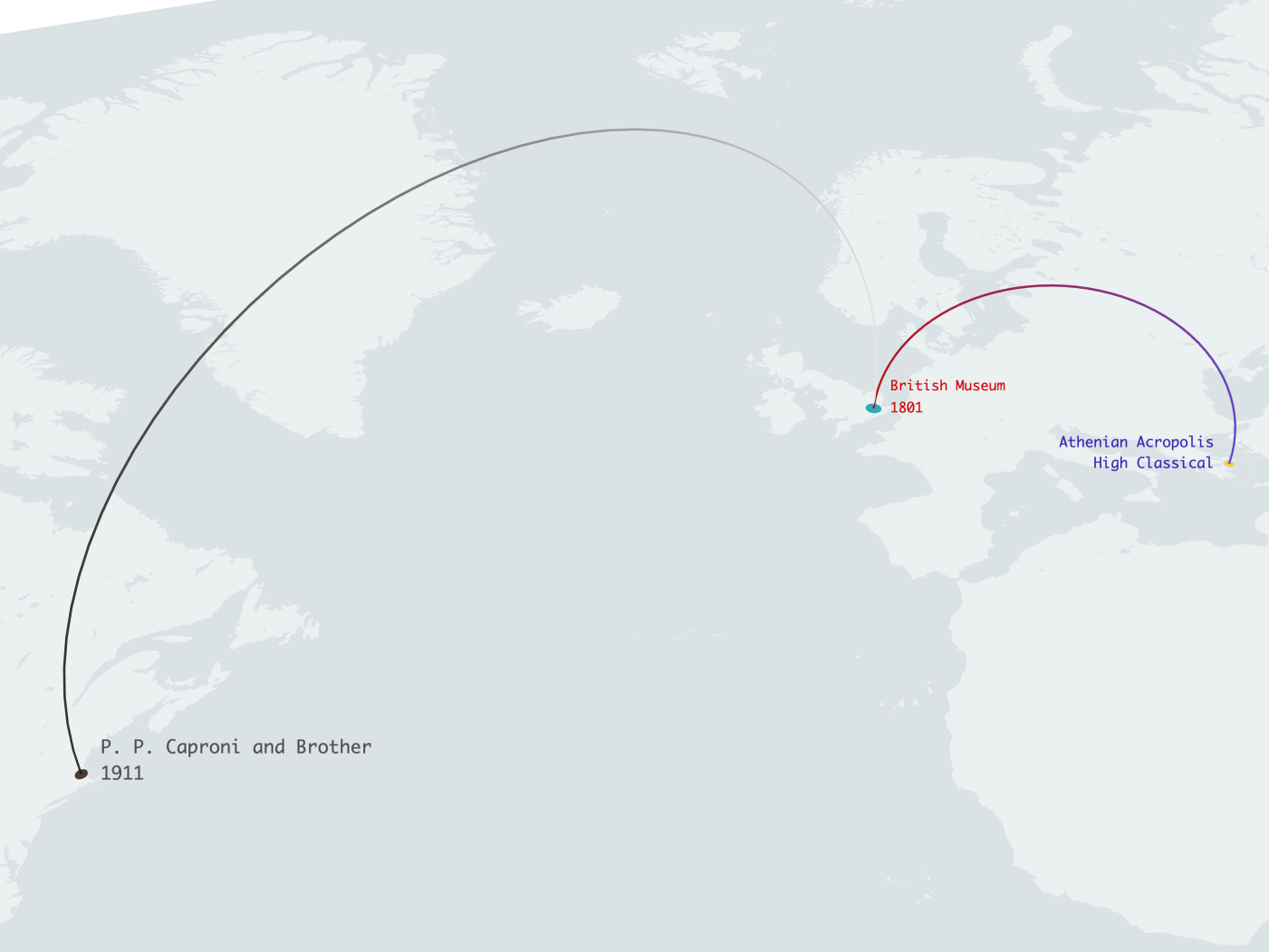History
The goddesses’ postures vary from left to right in order to accommodate the triangular architectural space. The Hestia sits upright nearest the apex and at the far left of the grouping, though the tuck of her right foot teases impending movement. The naturalistic rendering of the goddesses' anatomy, harmoniously blended with complex drapery that flows over them transparently as if liquid, make this grouping a remarkable example of Classical style at its most refined.
In 1911, the year he became the Dean of the Faculty, Battle purchased the two-piece cast of the goddesses of the Parthenon's East Pediment. Although he probably did not realize it at the time, with this acquisition Battle involved UT in the ongoing debate of ownership that had surrounded the Parthenon Marbles for nearly a century. While serving as the British ambassador to the Ottoman Empire from 1799 to 1803, Thomas Bruce, 7th Lord Elgin, removed sculptures and ornaments from the Parthenon for his private collection. This instigated immediate public outcry; notable individuals, like Lord Byron, attacked Elgin's actions in print. In 1816, having squandered his wealth obtaining and storing the marbles, Elgin sold them to the British government for £35,000. Today, they are displayed in the British Museum, though Greece continues to request their repatriation.
At UT, the goddesses were first displayed in the Old Main Building. Initially installed on the lower floor, they were moved in 1914 to the newly organized cast gallery on the top floor of the building. They were then moved in 1937 to the cast gallery in the New Main Building, where they remained until conflicting claims on the space led to the casts’ dispersal. The goddesses landed in the Classics Lounge at Waggener Hall; a 1974 memorandum records a vote of the whimsically-named "Committee on the Casting Off of the Casts" to keep the goddesses in the lounge. While the Hestia was in that location, however, students developed a tradition of sitting on her lap for photos, resulting in cracks in the plaster. These damages are recorded by the 1976 conservation survey conducted while the casts were in storage at the Pickle Research Campus. From 1980, the goddesses were prominently displayed at UT’s Huntington Art Gallery. In 2006, they moved to the second-storey atrium of the new Blanton building, but their tenure there was brief: in 2009, the cast of the Hestia was placed in storage, where it remains today.


